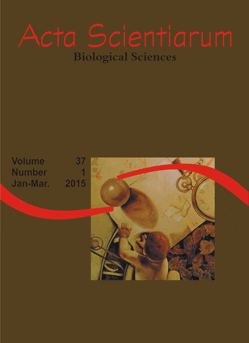OPTIMIZATION OF THE CULTURE CONDITIONS FOR TANNASE PRODUCTION BY Aspergillus sp. GM4 UNDER SOLID-STATE FERMENTATION
Abstract
The production of tannase by Aspergillus sp. GM4 under solid-state fermentation (SSF) was investigated using different vegetables leaves such as mango, jamun, coffee and agricultural residues such as coffee husks, rice husks and wheat bran. Among substrates used jamun leaves yielded high tannase production. The Plackett-Burman design was conducted to evaluate the effects of 12 independent variables on the production of tannase under SSF using jamun leaves as substrate. Among these variables, incubation time, potassium nitrate and tannic acid had significant effects on enzyme production. The best incubation time was studied and others variables were optimized using the Central Composite Design. The best conditions for tannase production were: incubation time of 2 days; tannic acid 1.53% (w/w) and potassium nitrate 2.71% (w/w). After the optimization process, the tannase production increased 4.65-fold.
Keywords: surface response methodology; enzyme; jamun
Downloads
DECLARATION OF ORIGINALITY AND COPYRIGHTS
I Declare that current article is original and has not been submitted for publication, in part or in whole, to any other national or international journal.
The copyrights belong exclusively to the authors. Published content is licensed under Creative Commons Attribution 4.0 (CC BY 4.0) guidelines, which allows sharing (copy and distribution of the material in any medium or format) and adaptation (remix, transform, and build upon the material) for any purpose, even commercially, under the terms of attribution.
Read this link for further information on how to use CC BY 4.0 properly.












1.png)




3.png)













